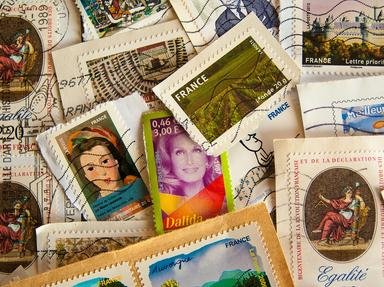
Going Postal! Trivia Quiz
Philately at its Finest
Philately - also known as stamp collecting - has been a favourite hobby for many, but sometimes the scarcity of a stamp or its historical significance makes it nigh impossible to find, much less acquire. Do you know the origins of these famous stamps?
A matching quiz
by reedy.
Estimated time: 3 mins.
- Home
- »
- Quizzes
- »
- Hobbies Trivia
- »
- Collectibles
- »
- Stamps